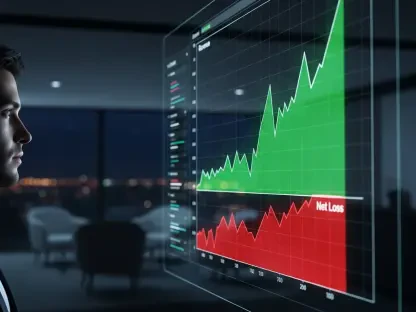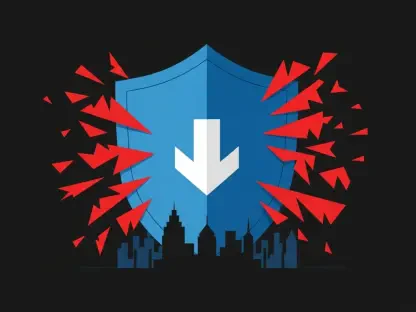Electric vehicles (EVs) have rapidly become a cornerstone of modern transportation, celebrated for their potential to reduce carbon emissions and reliance on fossil fuels. Yet, amid this progressive shift lies an intricate web of challenges in insuring these futuristic automobiles. As EVs gain popularity, insurers and brokers face a demanding landscape marked by significant complications. This review delves into the complexities of EV insurance, evaluating its components and highlighting its evolving nature in the transportation sector.
Examining the Core of Electric Vehicle Insurance
Electric vehicle insurance shares many attributes with traditional auto insurance, yet it comes with distinct considerations pertinent to EV technology. The primary components encompass coverage for potential damages, theft, liability, and specific EV-centric threats such as battery deterioration and advanced technology failures. The rise of electric vehicles underscores a pivotal evolution within the automobile industry, introducing novel elements to the insurance market that reflect technology’s broader influence on transportation innovations.
Integral to EV insurance is its adaptive nature, responding to a swiftly transforming industry. As electric vehicles shift from niche to mainstream, insurance policies tailored to these vehicles become increasingly sophisticated. The integration of complex features such as batteries and advanced driver-assistance systems (ADAS) necessitates updated approaches to underwriting, reflecting a transportation landscape shadowed by rapid advancement.
Uncovering Complexities in Insuring Electric Vehicles
High Repair Costs and Technological Demands
One of the most significant hurdles in EV insurance is the heightened cost of repairing these vehicles. Battery issues present a particular challenge, driving up repair expenses due to their complexity and the sophisticated technology involved. Components such as ADAS systems are another source of high costs, requiring precise calibration and expensive materials, complicating the repair process.
Supply Chain Strains and Parts Scarcity
The global supply chain, long seen as the epitome of efficiency, now mirrors the challenges faced by the EV repair industry. Disruptions in manufacturing and material delivery extend repair timelines and aggravate costs. Supply chain fragility, especially concerning critical EV components, transforms what was once a seamless repair experience into a logistical challenge for insurers, brokers, and vehicle owners alike.
Emerging Innovations Reshaping EV Insurance
Shifts in both technology and consumer behavior introduce fresh elements to the EV insurance landscape. Notable trends highlight evolving risk assessment practices and underwriting adjustments aimed at accommodating the particulars of electric vehicles. As more drivers embrace EVs, insurers are reevaluating variables traditionally applied to internal combustion engine vehicles.
This period of transition sparks innovation, reflected in customized policies that account for consumers’ diverse expectations and needs. New consumer habits, fueled by advancements in electric vehicle technology, guide insurers to rethink coverage options and risk assessment models, supporting a dynamic market demanding continuous adaptation.
Real-world Implementation and Insurance Strategic Approaches
In key markets globally, electric vehicles have become a fixture of both commercial and personal transportation. Cities harboring robust charging infrastructures are at the forefront of these trends. The presence of EVs in urban settings necessitates strategic insurance practices that accommodate unique elements like increased traffic density and the divided nature of journey patterns between fleet vehicles and individual owners.
Commercial use cases reflect the appeal of EVs in cost efficiency, prompting fleet operators to optimize their insurance policies in alignment with operational goals. Simultaneously, personal use scenarios require insurers to craft policies attuned to the realities of urban driving, reducing risk while considering the characteristics unique to EV users in bustling cityscapes.
Navigating Challenges Limiting Electric Vehicle Insurance
The technical and regulatory landscape presents ongoing difficulties affecting EV insurance. Insurers must navigate a maze of regulations, grappling with the fast pace of technological evolution and the ensuing market volatility. Established conventions in insuring traditional vehicles demand recalibration to address these growing complexities.
Efforts from insurers and brokers seek to counteract these pressures through innovation and strategy. New policy structures are emerging as organizations strategize to provide value amidst technological uncertainties and market fluctuations. Proactive initiatives focus on refining coverage options, ensuring comprehensive client protection regardless of evolving circumstances.
A Future Perspective on Electric Vehicle Insurance
The path forward for EV insurance is defined by potential developments poised to shape industry benchmarks. Technological breakthroughs hold the promise of easing current repair complexities and improving insurance models. As repair networks mature and parts become more readily available, the gap between EV and traditional vehicle insurance is expected to close.
The insurance sector stands at a pivotal crossroads, set to exert profound impacts on society by aligning with technological advances. Through strategic innovation and adaptability, the industry is likely to accommodate burgeoning EV adoption rates while aligning with future transportation trends.
Concluding Insights
Delving into the complexities of EV insurance has illuminated the intricate interplay of challenges and opportunities within this sector. While current obstacles demand nuanced navigation, the potential for industry transformation underscores a promising horizon. Moving forward, stakeholders will ideally continue innovating to mitigate complexities, informed by an acknowledgment of the unique traits of electric vehicles. In learning from past triumphs and challenges, insurers and brokers can refine approaches to coverage, ultimately fostering a robust landscape that keeps pace with technological frontiers.









